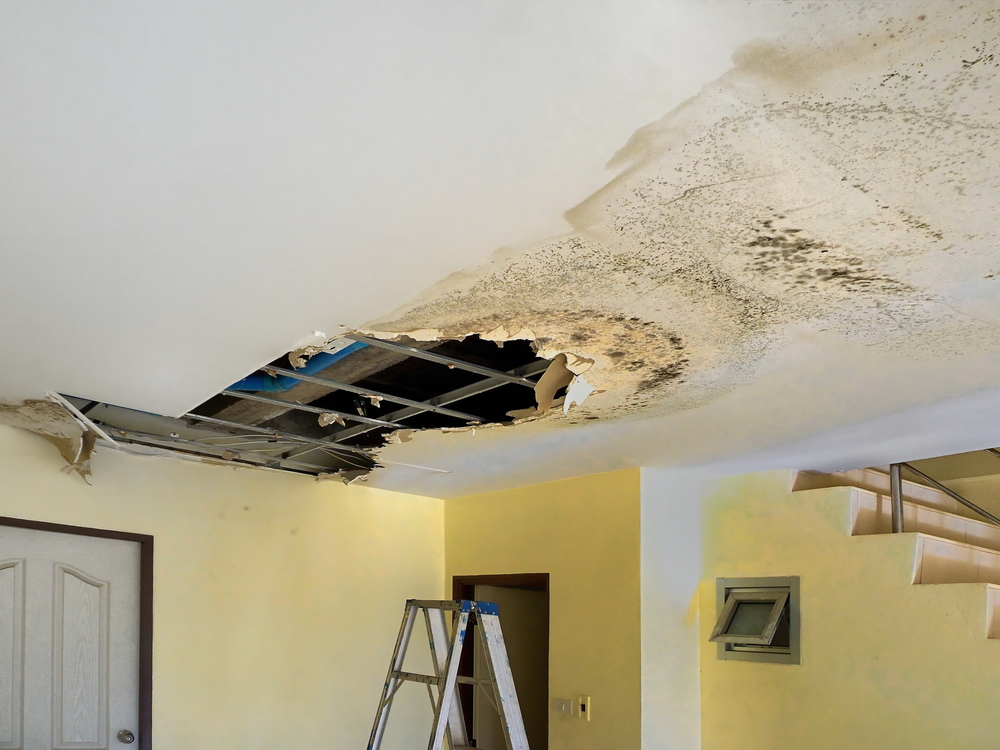Guide To Water Leak Detection At Home
Guide To Water Leak Detection At Home
Blog Article
What are your thoughts about Leaking water lines?

Early detection of leaking water lines can mitigate a possible catastrophe. Some little water leakages might not be noticeable.
1. Take A Look At the Water Meter
Every residence has a water meter. Inspecting it is a guaranteed way that aids you discover leaks. For beginners, switch off all the water sources. Guarantee nobody will purge, make use of the faucet, shower, run the cleaning device or dishwasher. From there, go to the meter as well as watch if it will certainly alter. Considering that no one is using it, there ought to be no movements. That indicates a fast-moving leakage if it moves. Similarly, if you discover no changes, wait a hr or two and inspect back once again. This suggests you might have a slow leak that could even be underground.
2. Check Water Intake
If you detect sudden changes, despite your usage being the exact same, it indicates that you have leakages in your plumbing system. An abrupt spike in your costs indicates a fast-moving leakage.
A consistent boost every month, even with the same practices, shows you have a slow-moving leakage that's likewise slowly escalating. Call a plumber to completely examine your building, particularly if you feel a cozy location on your flooring with piping below.
3. Do a Food Coloring Test
30% comes from commodes when it comes to water intake. Test to see if they are running appropriately. Decline flecks of food color in the tank and also wait 10 minutes. If the color in some way infiltrates your dish throughout that time without flushing, there's a leak in between the storage tank and also bowl.
4. Asses Exterior Lines
Don't fail to remember to check your outdoor water lines as well. Must water seep out of the connection, you have a loosened rubber gasket. One tiny leakage can lose lots of water and also increase your water bill.
5. Evaluate the situation as well as inspect
Homeowners ought to make it a habit to check under the sink counters as well as also inside cabinets for any type of bad odor or mold and mildew growth. These 2 warnings indicate a leakage so punctual focus is needed. Doing routine inspections, also bi-annually, can save you from a major problem.
More significantly, if you understand your home is currently old, keep a watchful eye on your heaters, hose pipes, pipes and so on. Check for stainings and damaging as a lot of appliances as well as pipes have a life span. They will certainly additionally normally wear away due to tear as well as wear. If you think dripping water lines in your plumbing system, don't await it to rise. Call a specialist plumber right now so you do not end up with a horrible mess in your house.
Early discovery of dripping water lines can reduce a prospective disaster. Some little water leaks may not be noticeable. Inspecting it is a proven method that helps you uncover leakages. One tiny leakage can squander bunches of water as well as spike your water bill.
If you suspect dripping water lines in your plumbing system, do not wait for it to intensify.
WARNING SIGNS OF WATER LEAKAGE BEHIND THE WALL
PERSISTENT MUSTY ODORS
As water slowly drips from a leaky pipe inside the wall, flooring and sheetrock stay damp and develop an odor similar to wet cardboard. It generates a musty smell that can help you find hidden leaks.
MOLD IN UNUSUAL AREAS
Mold usually grows in wet areas like kitchens, baths and laundry rooms. If you spot the stuff on walls or baseboards in other rooms of the house, it’s a good indicator of undetected water leaks.
STAINS THAT GROW
When mold thrives around a leaky pipe, it sometimes takes hold on the inside surface of the affected wall. A growing stain on otherwise clean sheetrock is often your sign of a hidden plumbing problem.
PEELING OR BUBBLING WALLPAPER / PAINT
This clue is easy to miss in rooms that don’t get much use. When you see wallpaper separating along seams or paint bubbling or flaking off the wall, blame sheetrock that stays wet because of an undetected leak.
BUCKLED CEILINGS AND STAINED FLOORS
If ceilings or floors in bathrooms, kitchens or laundry areas develop structural problems, don’t rule out constant damp inside the walls. Wet sheetrock can affect adjacent framing, flooring and ceilings.
https://www.servicemasterbyzaba.com/blog/how-to-detect-water-leakage-in-walls/

I am very interested by Top leak detection hacks and I hope you enjoyed reading my blog posting. For those who enjoyed reading our article if you please do not forget to share it. Thanks for your time invested reading it.
Report this page